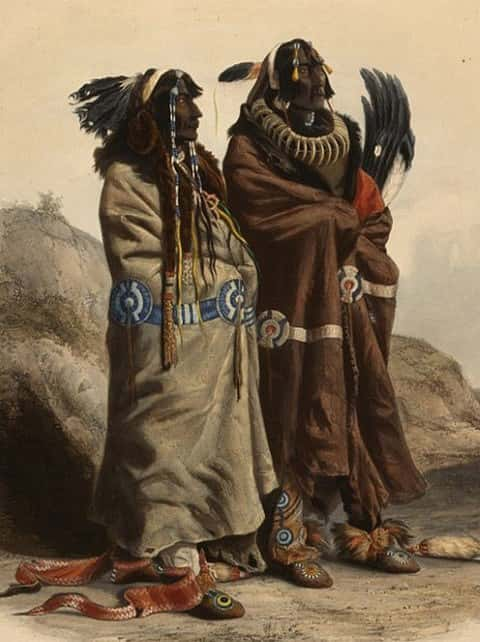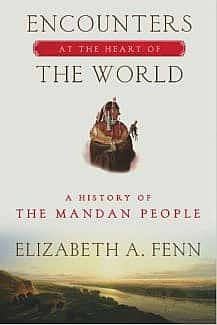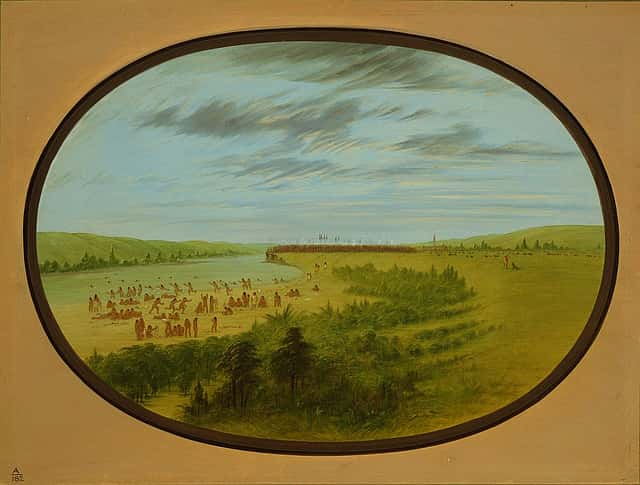
Mandans – Strong Spirits, Stronger Stomachs
Dear Members,
In case you missed it…
I attended Pulitzer Award-winning author Elizabeth Fenn’s presentation on the Mandan people at the Center on June 14, 2017. For generations, the Mandans thrived in permanent earth lodge camps at the confluence of the Missouri and Heart Rivers in what is now North Dakota.
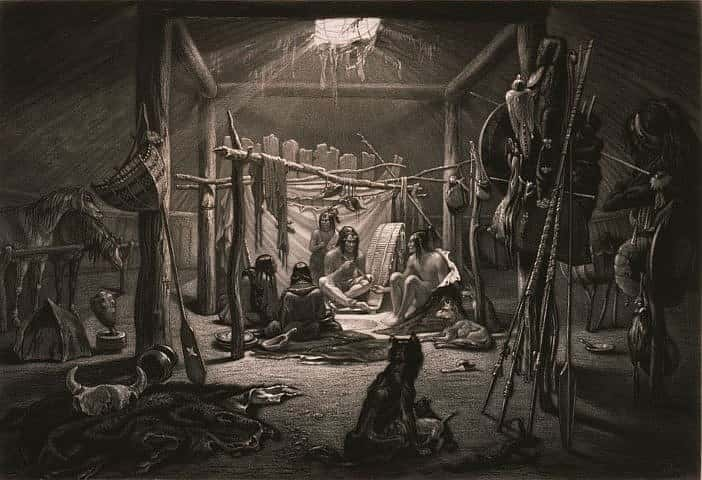
Strong Spirits
The security of their camp was due mostly to their agricultural expertise within the short growing season. Dozens of varieties of maize and other crops were harvested each year and stored underground to be used as trade goods and winter sustenance.

Recent magnetic gradiometer scans of the area they inhabited show successive retractions of the outer border of their camp, the earliest of which is not visible to the naked eye. Fenn shared several theories which might explain the cause of the Mandans’ shrinking population including:
- climate change
- clashes with neighboring tribes
- strain on natural resources
- expansion of trade routes due to the reintroduction of the horse which led to the rampant spread of foreign species of pests and pestilence, most notably
- smallpox
- measles
- whooping cough
- Norwegian rats
Likely, it was all these factors in combination that eventually devastated this well-rooted community.
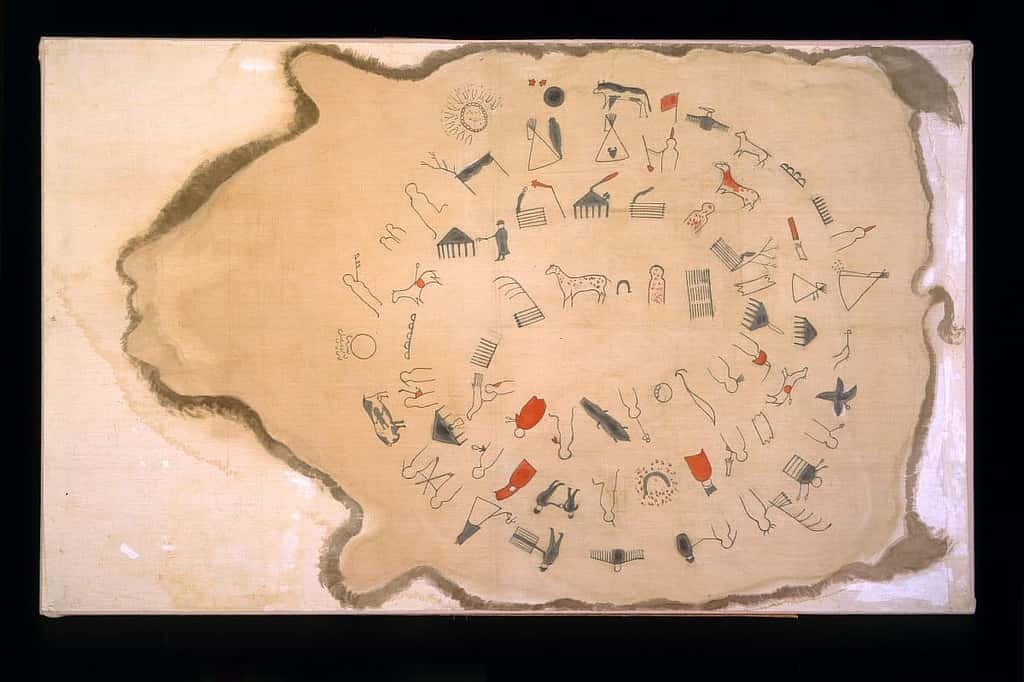
Despite the collapse of a centuries-old way of life, the Mandan people survived. This is a feat worthy of our admiration and reflection, according to Fenn, a testament to their strong spirits. Today, they are intermixed with the Hidatsa and Arikara tribes known collectively as the Three Affiliated Tribes.
Stronger Stomachs
Almost in passing, Fenn mentioned the Mandan delicacy “float bison.” Please tell me I’m not the only one who’s never heard of this. I’m endlessly fascinated by the things people eat to sustain themselves in harsh climates and hard times that eventually become preferred fare. It seems that float bison, much like Iceland’s hákarl, Greenland’s kiviak, or China’s century eggs, is a bit of an acquired taste.
Here’s a passage about float bison from Fenn’s book1:
The fur trader Charles McKenzie witnessed a creative variation of the buffalo drive in the winter of 1806, when the Mandans mobilized “multitudes of people flying from every direction” to incrementally force “large bands” of bison toward thin spots in the Missouri River ice. The ice soon gave way, drowning the animals as the current swept them beneath the frozen surface. Downstream, other villagers waited at an open pool, where the dead bison bobbed up and the bystanders pulled them ashore.
McKenzie observed something else as well. Once hauled from the water, the carcasses “were left for some time to Season into a flavor then carried home and at feasts are reckoned a great delicacy.” McKenzie found these ripened “float bison” revolting. But they were a delicacy – documented by many observers – for Missouri River peoples. The more rotten the flesh, the more appealing it was. “When the skin is raised you will see the flesh of a greenish hue, and ready to become alive at the least exposure to the sun,” McKenzie said, the meat, “so ripe, so tender, that very little boiling is required – the stench is absolutely intolerable.” The Indians preferred float bison “to any other kind of food.” It boiled up into a “bottle green” soup that the Mandans “reckoned delicious.” Indeed, McKenzie said, “so fond are the Mandanes of putrid meat that they bury animals whole in the winter for consumption of the Spring.”
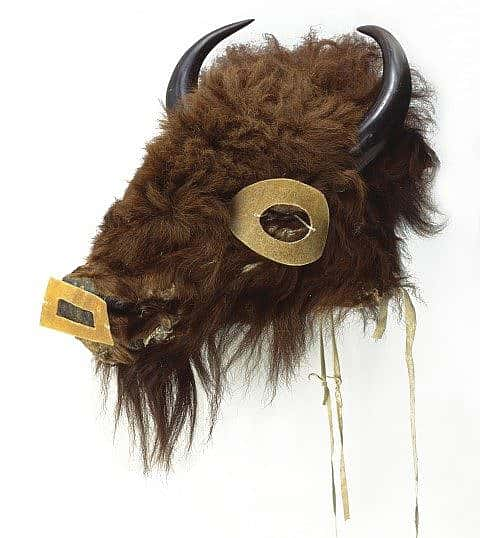
While I’m no stranger to fermented foods, in my family, we consider meat barely past its expiration date too dangerous to eat. It’s thrown out long before it reaches the putrid state because food-borne illness is no joke. If conditions aren’t quite right for these traditional recipes, a fatal case of botulism may also be what’s for dinner!
At this very moment, as I sit here wondering if it’s really worth the risk in today’s world, people groups across the globe are willingly ingesting rotten food. Does it really taste that good? Do Missouri River peoples still eat float bison or some modern derivative of it? I’m not sure, but even if I knew it’d sustained my ancestors (and was therefore partly to credit for my own existence), “bottle green” meat in any form would be tough for me to swallow. What about you? Is there anything that you eat that others can’t quite stomach?
Learn more
Fenn’s book, Encounters at the Heart of the World: A History of the Mandan People, is available in the Center Store. You should check it out! Call 307-578-4072 to order your copy today.
More information about Mandan, Hidatsa, and Arikara tribes:
Points West Online: The Industrious Women of the Upper Missouri River Tribes
Points West Online: The Mandan, Hidatsa, and Arikara People and the Flood Control Act of 1944
Elizabeth A. Fenn, Encounters at the Heart of the World: A History of the Mandan People, (New York: Hill and Wang, a division of Farrar, Straus, and Giroux, 2014), 68.
Written By
Rachel Lee
Rachel raises money for the general operations of the Center through Membership and Annual Fund. She regularly communicates with members and donors through letters, phone calls, e-mails, and special events. Outside of work, Rachel enjoys gardening, reading, cooking, making fancy cakes, and most all other creative outlets!
